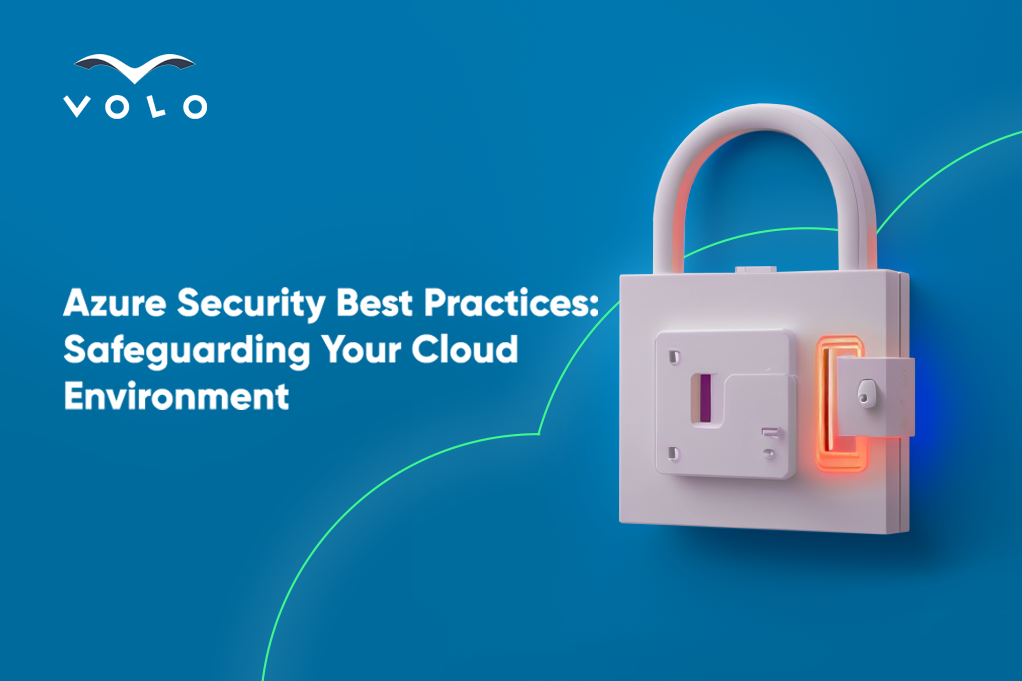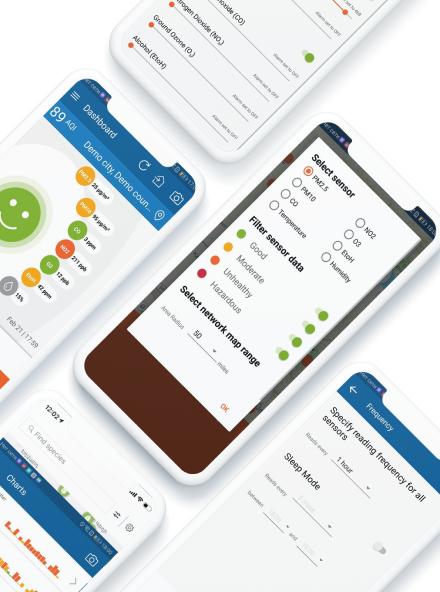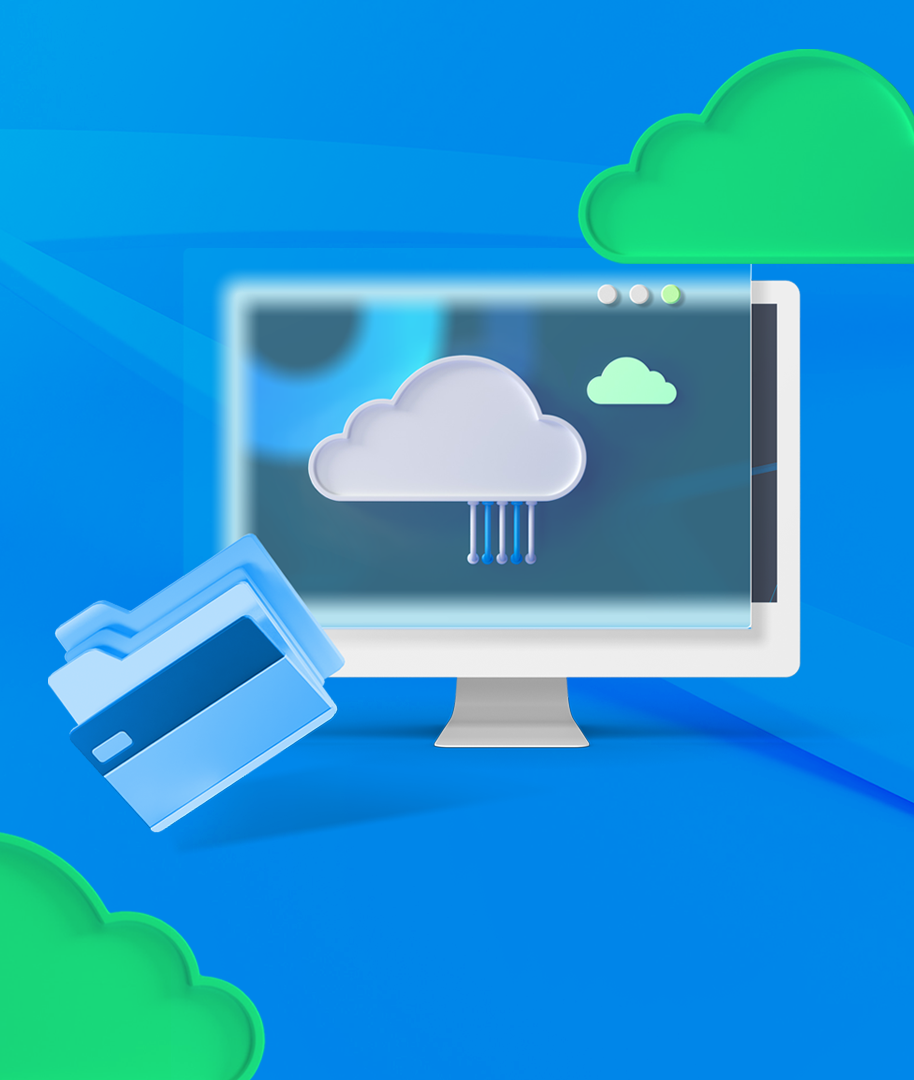
Azure Security Best Practices: Safeguarding Your Cloud Environment
19 Jun 2024

A cloud environment is efficient and lucrative for your business only if it is secure. When you think of modern technologies and innovation, the first thing that comes to mind is, “is this reliable?”. That’s what comes to the mind of your users, of your employees, and everyone who deals with data nowadays. This is why you should always ensure to incorporate the right security practices into your cloud environment. There is no alternative to security investments and efforts - there is simply too much at stake.
Why are Azure Security Best Practices Important?
When it comes to Azure cloud, Microsoft has made sure to incorporate some of the best security measures and mechanisms into its cloud architecture. They offer a range of practices to help protect your sensitive data, achieve regulatory compliance, and simply mitigate cyber risks.
Here is why Azure security best practices are of crucial importance for your business:
- They can save your reputation and reduce costs associated with security breaches.
- They help ensure business continuity and operational efficiency.
- With the help of these security measures, you gain the trust and loyalty of your customers.
- They promote a culture of continuous improvement and resilience within your organization.
- And finally, they protect your cloud infrastructure, critical systems, services, and sensitive company data.

What are the Fundamental Azure Security Best Practices?
Below we have gathered some of the well-established practices that you should implement in order to ensure your Azure cloud environment security.
1. Implement Robust Identity and Access Management Practices
Strong identity and access management (IAM) strategies are at the core of Azure’s security principles. Make sure to have such practices in place as multi-factor authentication for your user accounts, role-based access control, and regular reviews and audits of user access to detect security vulnerabilities before it’s too late.
With the help of Azure Active Directory (AD) you can control who has access to which systems and limit users to only those that are directly linked to their role-based responsibilities. This way you can essentially enhance your cloud security and prevent possible breaches.
2. Ensure a Safe and Secure Network Architecture
Network security comprises an important part of safeguarding your Azure environment. Here are a few quick steps you can take to ensure your network architecture is safe and secure:
- Determine virtual networks for your Azure virtual machines and route traffic within the Azure network using Virtual Network Endpoints. This will ensure private connectivity by connecting your virtual network to Azure services, bypassing the public internet. You’ll also be able to keep traffic within Azure’s network thus enhancing security further. Additionally, it will also improve performance through high throughput and low latency. And finally, it helps simplify network management via the direct and private access to Azure services.
- Control and monitor inbound and outbound traffic with the help of Azure Firewall or Network Security Groups (NSGs).
- Always use private endpoints or connections to ensure secure access to your Azure services.
- Combine firewalls, security tools, monitoring, and logging for robust endpoint protection.
- Prevent denial-of-service attacks by using traffic monitoring, telemetry, and Azure’s DDoS Protection tools.
- Use virtual private networks (VPNs) or Azure ExpressRoute to have secure connectivity between your onsite and Azure resources.
Above all, make sure to conduct regular vulnerability scans on your Azure cloud infrastructure to keep your network safe from the growing threat of cyber attacks.
3. Perform Data Encryption
As they say, data is the new oil and it is indeed the fuel of your cloud environment. At the end of the day, all the security measures you take for your Azure cloud environment are and should be directed to data protection.
Microsoft Azure comes with its own storage encryption for data safety in the Azure cloud. It also has the so-called Azure Key Vault which is aimed at protecting API keys, cryptographic keys, certificates, passwords, and other datasets of critical importance.
The tech giant delivers multiple other data protection protocols too. For example, Azure SQL Database and Azure Cosmos DB provide built-in encryption for data at rest and in transit. The Azure Disk Encryption ensures the safety of virtual machine (VM) disks. Azure Blob storage comes with immutable storage which is easily configurable and has time-sensitive retention or legal hold policies. Immutable storage means that as soon as backups have been carried out to the storage, they cannot be encrypted, changed, or removed by cyber criminals.
4. Enact Threat Detection and Monitoring Practices
Did you know that based on a 2020 IBM survey, on average 207 days are required to detect a security breach and another 73 to resolve it? Microsoft Azure offers multiple monitoring and logging tools that can help reduce this time and contain security breaches early on. Some of these tools are as follows:
- Azure Monitor keeps an eye on activities and resource spending as well as sends alerts if the usage falls outside specific parameters. Both Azure Monitor and Azure Log Analytics enable real-time monitoring and analysis of your Azure resources.
- Azure Security Center gathers events from Azure resources and logs from configured resources outside Azure, enabling you to check network maps and get security enhancement suggestions based on these logs.
- Azure Sentinel helps with such tasks as detecting, investigating, and responding to threats.
5. Back up Your Data and Prepare for Disaster Recovery
You don’t want to risk losing data or having regular system outages. Such incidents cost businesses not only financial losses but also extreme reputational damage. And bear in mind - it is way harder to recover from the latter than from the former.
To avoid the mess that comes with data leaks and system outages, it’s advised to have solid backup and disaster recovery mechanisms in place. Azure has a lot to offer in this respect:
- You can ensure data backup consistency and availability with the help of Azure Backup tool.
- Azure Site Recovery can be used to recover VMs and apps in case system outages happen.
The key to success in this area of security is consistency. You should systematically test your disaster recovery methodologies to keep them up to date and ready to be used when the need arises.
6. Stay Compliant with Industry Regulations
Another important issue is ensuring compliance with industry regulations and organizational policies. Use the Azure Government platform to evaluate your compliance with government regulations. All you need to do is request an account and if you qualify and get on board, you’ll be able to solve your regulatory compliance issues. Azure Blueprints will help you determine and implement a handy set of Azure resources and policies. Through Azure Policy you can apply compliance standards in your Azure environment. Additionally, make sure to reap the benefits that Azure Security Center offers, with multiple regulatory compliance evaluations and recommendations.
7. Use Privileges Access Workstations (PAW)
Another important security measure is having separate workstations for work and daily tasks and activities on the internet. Microsoft has Privileges Access Workstations which are special computers with the goal to keep critical data secure. Only predetermined users can access the data in these workstations. The latter come with extra security layers to keep hackers and unauthorized people at bay.
Furthermore, even if someone manages to hack them, it will still be extremely difficult to cause actual damage. You can use these workstations to handle your sensitive data and prevent it from getting into the wrong hands.
Parting Thoughts
Securing your Azure cloud environment is an ongoing process that evolves as new threats emerge and your organization's needs change. By adhering to best practices, such as implementing strong identity and access management, leveraging Azure security services, and consistently monitoring your environment, you can essentially reduce risks and enhance your security.

Keep in mind that security is a shared responsibility and staying informed and proactive is key to protecting your data in the cloud. Make sure to regularly review and update your security strategies to adapt to the dynamic landscape of the cloud. If you are not sure whether or not your Azure environment is secure enough, you can always talk to a professional. Our Azure experts can help you understand the security gaps and vulnerabilities in your cloud environment and recommend the best ways to address them efficiently and safely.
More helpful resources:
- Microsoft Azure vs. AWS vs. Google Cloud: Which One to Choose?
- Mastering Azure's Well-Architected Framework for Cloud Success
- 7 Benefits of Azure Cloud Migration from On-Premises Data Centers
- How to Streamline the Process of Migration to the Cloud?
- Top 10 Cloud Migration Challenges and How to Overcome Them?
- A Guide to Successful Migration to the Cloud: Benefits, Approaches, and Best Practices



